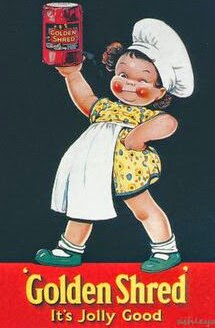Ancient astrology, in common with most ancient ideas, retains a certain curious appeal, but the parts of it I've come across accidentally have been pretty hard to take seriously. For instance, I read about Firdar years ago and promptly set it aside as seeming like just another ancient "astrological board game":
Firdar or Alfridaria from glossary here:
From a full explanation by Stephen Birchfield A.M.A. HERE
Perhaps I should not be so hasty as to cast aside Firdar - it might have some bearing on my pet theory about astrology: that the planets, in their cycles, are simply markers on waves of time, each wave bringing in different cosmic "atmospheres", which can be felt here on Earth, the waves roll on, sometimes criss-crossing, sometimes blending. Best leave Firdar in the "pending" tray!
I found another tid-bit of ancient astrological thought in a book sparsely titled Astrology by Irish poet Louis MacNeice:
Aphorisms of Jerome Cardan (1501-1576), Italian physician and astrologer.
Pronouncements by ancient astrologers tend to be on the gloomy side, too much so to take too seriously. It's always "is" or "will be" rather than "could be" or "likely to be". Still, they're fun to read and consider, and there could be a germ of truth included....perhaps.
Astrodatabank's page and natal chart on Cardan
Wikipedia page on Cardan
I've mentioned MacNeice and his book in a past post....here. There are other snips from the book among the archives, accessible by clicking on "Louis MacNeice" in the label cloud in the sidebar.
Firdar or Alfridaria from glossary here:
Derived from the mixed Arabic and Persian "al firdar", the alfridaria, or alfridaries, are a system of planetary periods of Persian origin first described as far as we know by Abu Mashar. Originally intended for the long term forecasting of historical events, they can also be used in predicting for individual charts.Nutshell: Different periods of life are associated with different planets which will define the theme prevailing during each of the periods.
From a full explanation by Stephen Birchfield A.M.A. HERE
It will be useful for us to examine this teaching at the source, Abu Ma’shar -Another full explanation of Firdar by one of today's well-respected astrologers, Robert Hand, is HERE. Firdar did come up in a 2012 post of my own about 75 year cycles.
“Each of the seven stars, and the Ascending and Descending Nodes, has certain determinate times, and each star administers to the native in accordance with its proper firdar. The firdar of the Sun, then, is 10 years; of Aphrodite, 8; of Hermes, 13; of the Moon, 9; of Kronos, 11; of Zeus, 12; of Ares, 7; of the Ascending Node, 3; of the Descending Node, 2 – altogether, they are 75.
Perhaps I should not be so hasty as to cast aside Firdar - it might have some bearing on my pet theory about astrology: that the planets, in their cycles, are simply markers on waves of time, each wave bringing in different cosmic "atmospheres", which can be felt here on Earth, the waves roll on, sometimes criss-crossing, sometimes blending. Best leave Firdar in the "pending" tray!
I found another tid-bit of ancient astrological thought in a book sparsely titled Astrology by Irish poet Louis MacNeice:
Aphorisms of Jerome Cardan (1501-1576), Italian physician and astrologer.
Pronouncements by ancient astrologers tend to be on the gloomy side, too much so to take too seriously. It's always "is" or "will be" rather than "could be" or "likely to be". Still, they're fun to read and consider, and there could be a germ of truth included....perhaps.
Astrodatabank's page and natal chart on Cardan
 |
| Jerome Cardan |
Some Aphorisms of Cardan....
When the Moon is in Scorpio in square of Saturn in Leo or in his opposition when he is in Taurus partilely, the Native rarely has either Wife or Children, but if Saturn be in Aquarius, he will be a mere Woman hater.
Mercury mixing his Beams with Mars, is a great argument of a violent death.
When Venus is with Saturn, and beholds the Lord of the ascendant, the Native is inclinable to Sodomy, or at least shall love old hard-favoured Women, or poor dirty Wenches.
The Moon, full of Light in conjunction with Mars, makes the Native be counted a Fool, but if she be void of light and with Saturn, he is so indeed.
A Woman that has Mars with the Moon is Right, I'll warrant her.
The Moon in Aquarius or Pisces makes the Native not at all acceptable amongst Princes or Grandees.
In Purging, 'tis best that the Moon and Lord of the Ascendant descend and be under the Earth, in vomiting that they Ascend.
Make no new Clothes, nor first put them on when the Moon is in Scorpio, especially if she be full of light and beheld of Mars, for they will be apt to be torn and quickly worn out.
If a Comet appear while a Woman goes with Child, if it be either in the fourth, fifth or eightth month, such Child will prove very prone to anger and quarrels, and if he be of quality, to sedition.
Saturn in fixed signs causes scarcity of Corn, dear years, and the Death of many Men.
When Saturn is in Libra and Jupiter in Cancer, great Changes and Alterations shall happen in the world.
- Jerome Cardan, Seven Segments, 1547, translated by William Lilly, 1676.
I've mentioned MacNeice and his book in a past post....here. There are other snips from the book among the archives, accessible by clicking on "Louis MacNeice" in the label cloud in the sidebar.





















































